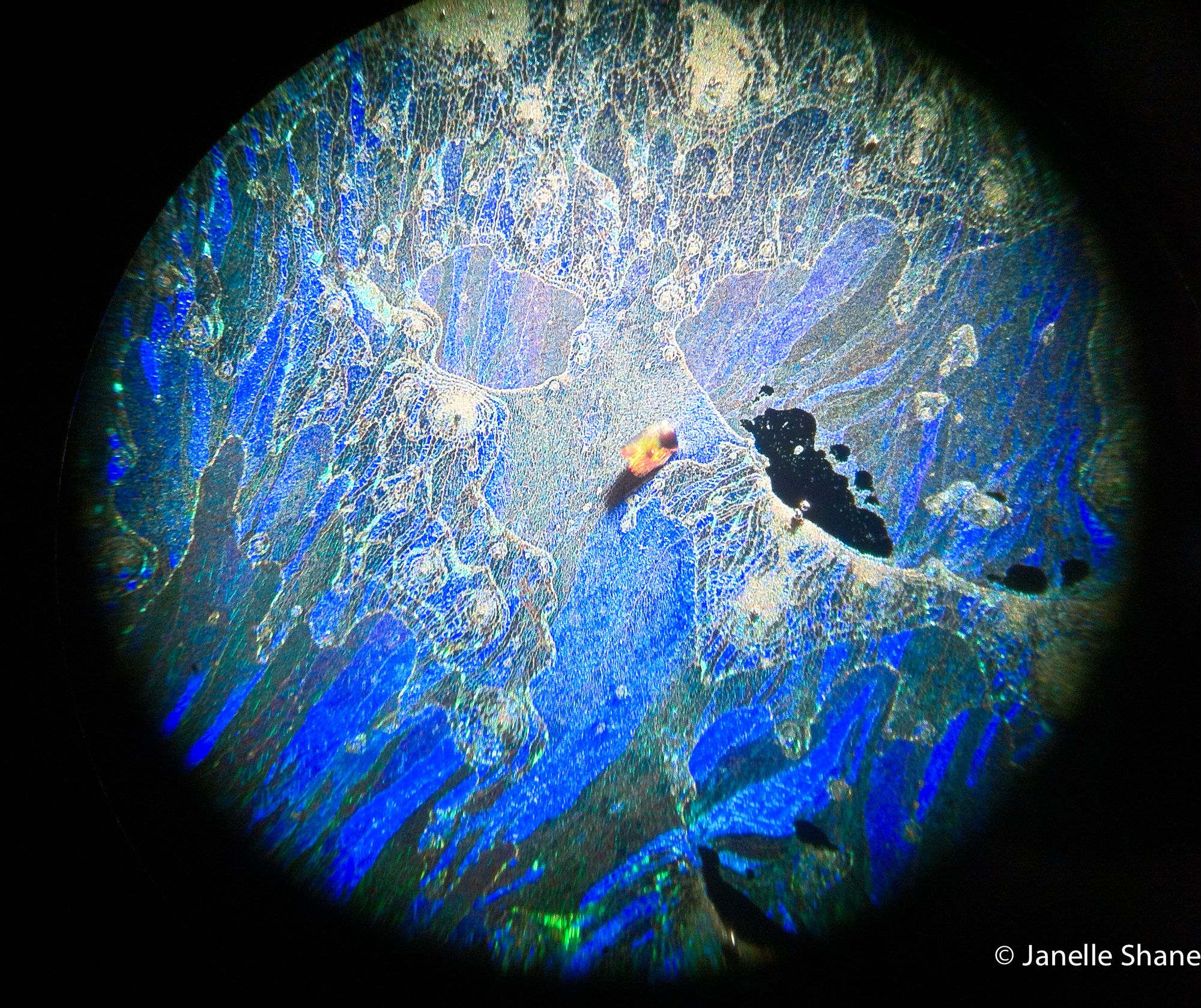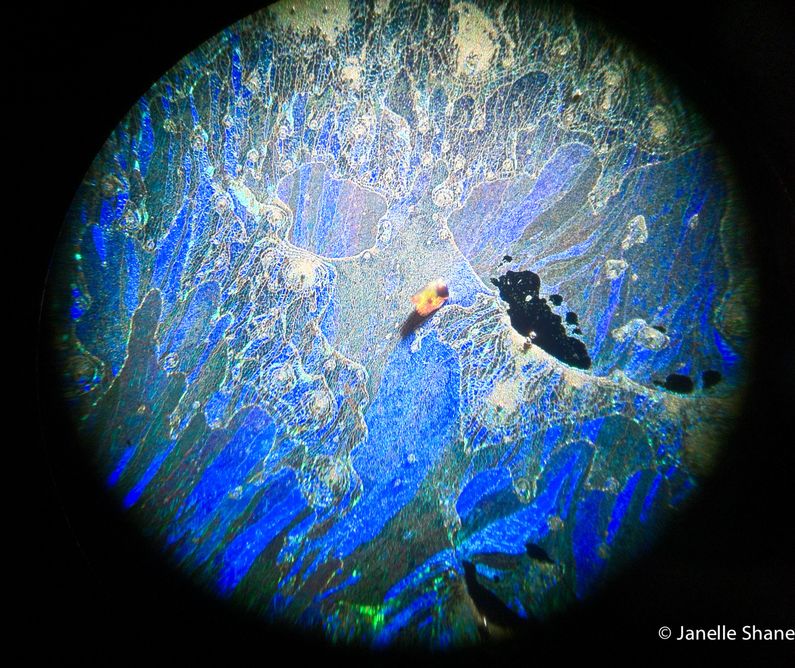(Untitled)

Check it out - we made opal!
My labmate Lindsay Freeman made this thin layer of opal on glass, and this is what it ends up looking like under a microscope - crazy patterns and planes of swirled color, some areas calm, some areas highly chaotic. From this angle it looks blue, while from other angles you get the classic opal fire flashes of green and red.
How do you make opal? It turns out all opal - artificial and natural - gets its color not from dyes but from nano-sized glass beads that pack themselves tightly together in regular rows. In the lab Lindsay started with a bunch of glass beads all suspended in liquid. She put some drops of liquid on glass and allowed them to evaporate - as the liquid evaporated, the beads settled into rows just like a box of marbles might do if you shook them.
Different areas happen to have settled into rows at slightly different angles - you can see the borders between these areas as transitions between light and dark patches in the opal. As you turn an opal in your hand, at different angles you’ll see these different areas catch the light and change color.
The same sort of phenomenon - nanosized structures in rows that you view at different angles - is behind the shifting color patterns in butterfly wings and iridescent bird feathers.


